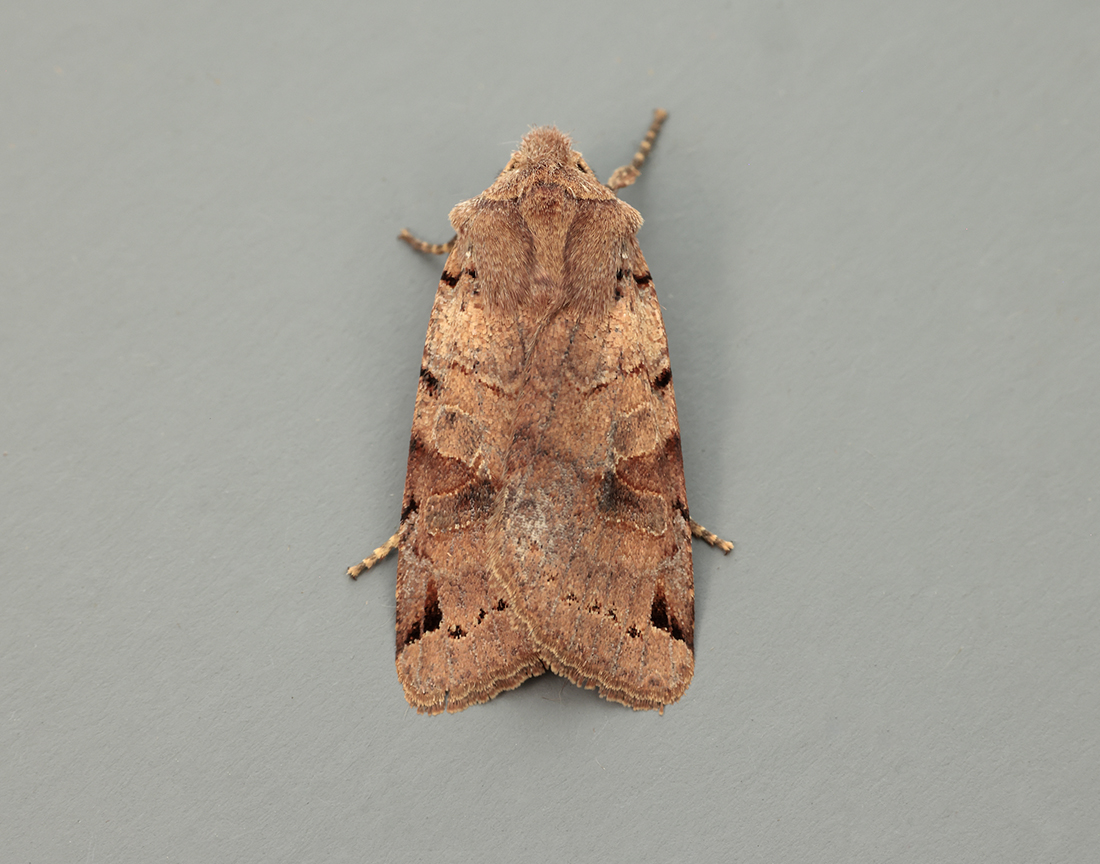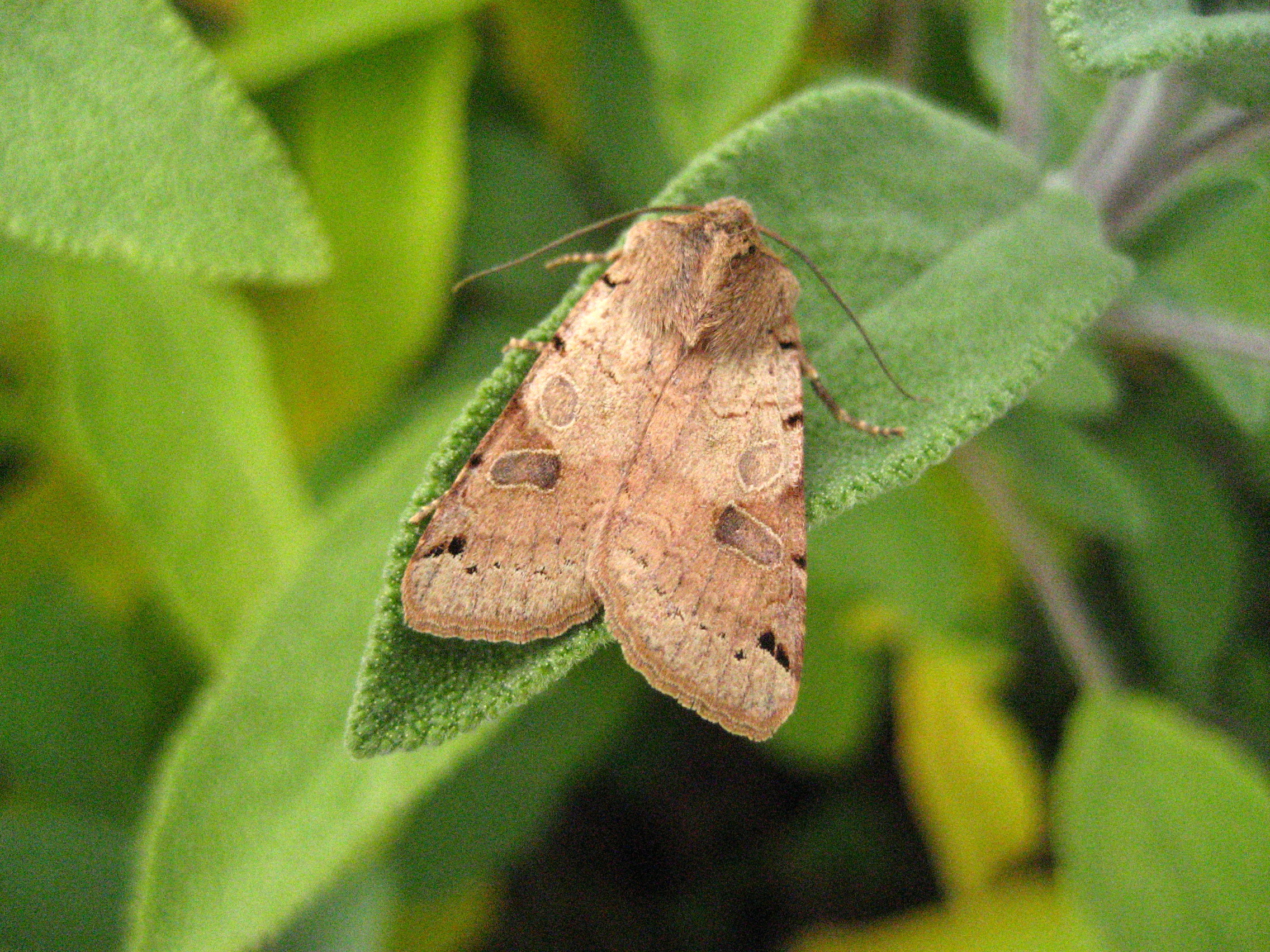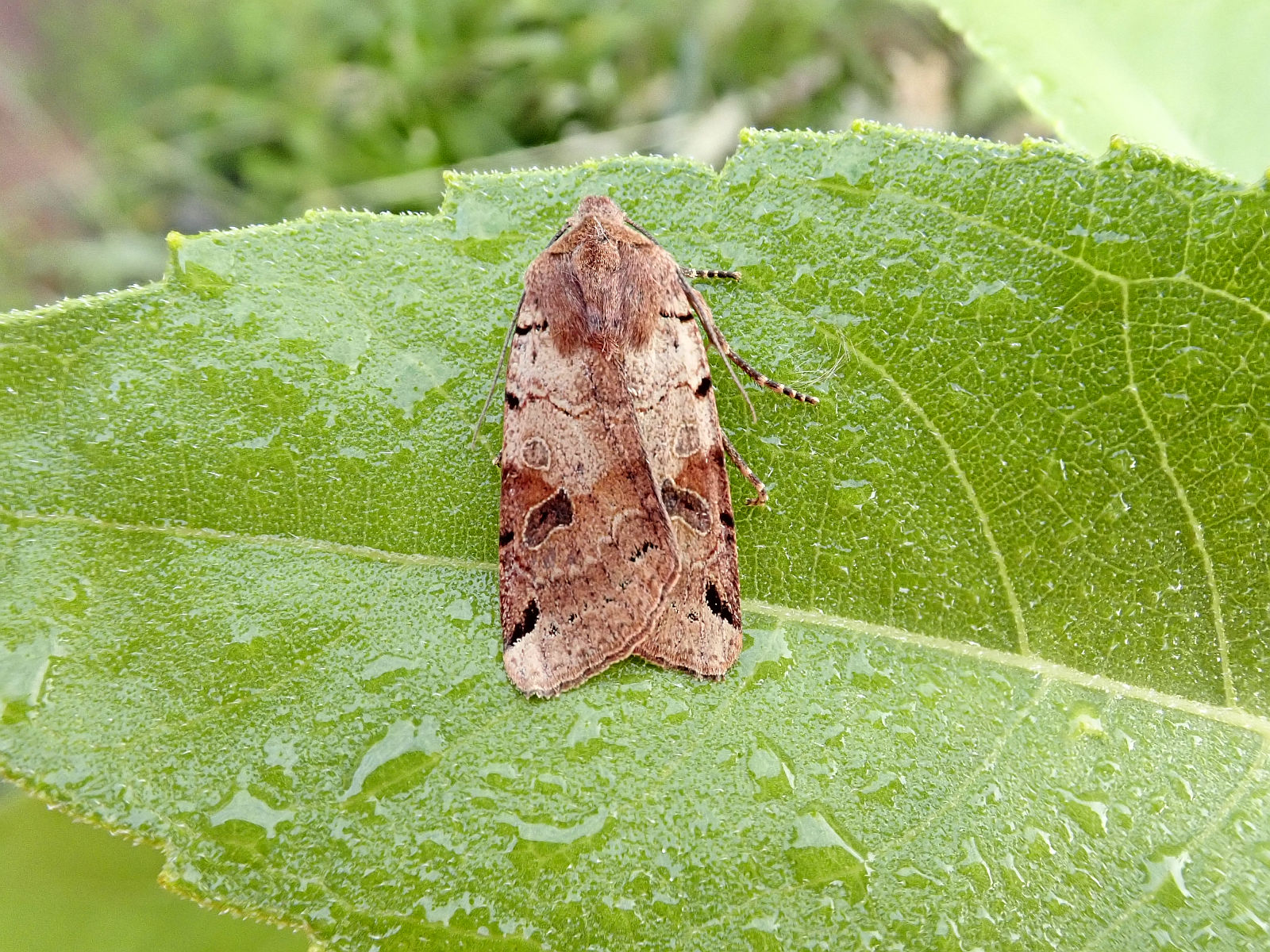Identification
Diagnostic features are the short diagonal black dash near the apex of the forewing, dark marks along the costa and a partial black cross-line at the wing base.
Recording Method.
Attracted to light, also comes to sugar and flowers.
Life cycle
One generation. Overwinters as an egg. Larvae present during April to early June, feeding at night. Pupation is about six weeks later in an underground cocoon.
Larval foodplants
Larval foodplants include several herbaceous and woody plants.
Habitat
Wide range of habitats including woodland, parkland, scrub, hedgerows and fens.
History
Lennon (1863) stated it to be common in moist places. Gordon (1913) states that one was taken on a window at Alticry House, Wigtownshire, by Mrs. Bonner on 25th August 1909. Additional to MOGBI for VC74. Sir Arthur Duncan (1909-84) during his lifetime had found it at Closeburn, Tynron and Castlehill, Dumfries (all VC72).
During 1976-82 Waterside Mains at Keir, produced many records, Mabie Forest 1985-89 added a few records, this being the only Rothamsted data. Kirkton (VC72) recorded many records during 1992-2010, with Mersehead RSPB also adding many records in the same period.









